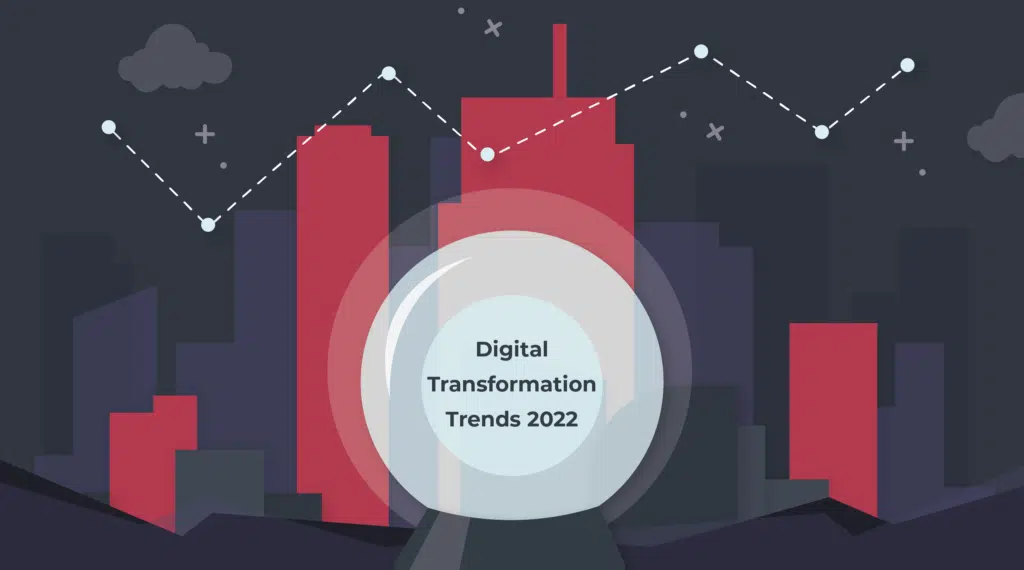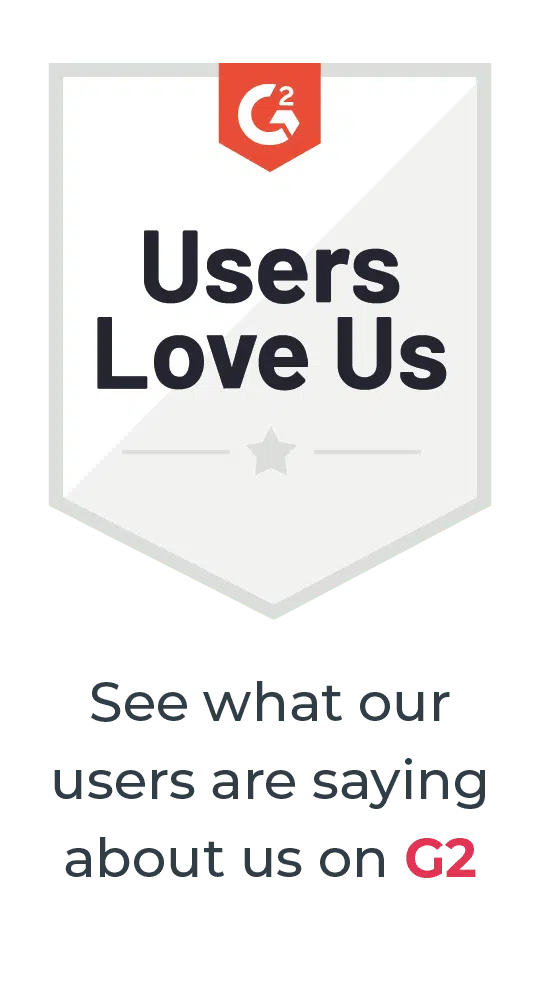Updated on by Hayley Brown
2020 turned out to be a year that no one could have predicted. The pandemic spread around the globe and it forced businesses to restructure. They sent their employees home and embrace a world of zoom meetings, remote learning, messaging services and cloud systems.
As a result of this newfound reliance on digital technologies, it has meant that digital acceleration in businesses big and small has seen huge advancements. Companies around the world have turned to digital solutions and cloud-based software as a service (SaaS), to help create new products. As well as build new business models, improve customer engagement, and sell more of their existing products. Ultimately using new technology led initiatives to reimagine the old ways of doing things.
So what has 2021 got in store for us? We thought we’d throw our hat in the ring and compile a list of trends we might expect from the world of SaaS this year.
Read our latest blog post on the emerging digital transformation trends for 2022
Increased opportunity for vertically focused SaaS solutions
What is vertical SaaS? It describes a type of software as a service or cloud computing solution created for specific industries. Sectors include retail, banking, insurance, healthcare and the automotive industry.
Last year we predicted that there would be an increase in narrow, vertical-specific SaaS applications and we weren’t wrong. The cloud services market was predicted by Gartner to grow by 20% in 2020. Software as a service (SaaS) remains the largest market segment and is forecast to grow to $133 billion in 2021.
Around the world, businesses are increasingly searching for software as a service that can target specific pain points. Unlike horizontal SaaS which provides solutions based on the common needs of companies in different industries. This opens up an opportunity for vertical SaaS companies to develop solutions that are purpose-built for specific or niche sectors. Vertical SaaS aims to deliver more business value and better outcomes to a narrower targeted user base.
This trend does not appear to be slowing down anytime soon. The advancement of other technology such as Artificial Intelligence, API Integrations, blockchain and mobile SaaS products. All help vertical SaaS businesses grow and dominate their niche markets. SaaS applications have been increasing year on year. So, 2021 will undoubtedly see an increase and a new wave of targeted applications.
Artificial Intelligence
Artificial Intelligence is seeping evermore into our daily lives from how we live, work and our entertainment. AI is concerned with building smart machines capable of performing tasks that typically require human intelligence.
The ability for machines to learn on their own so they can improve on past iterations, help them to become smarter and more aware. Examples include voice assistants like Siri and Alexa. Content-on-demand services such as Netflix use predictive technology to offer recommendations based on the customers’ interests, reactions and behaviour. Nest is a learning thermostat that uses behavioural algorithms to learn from your heating and cooling needs.
Artificial Intelligence was predicted to grow from $28 billion in 2019 to $40 billion in 2020. This growth is mainly due to the pandemic leading to a new wave of transformative technologies.
When SaaS is combined with AI capabilities it can enable businesses to obtain better value from their data. As well as automate and personalize services, improve security and supplement human capacity. AI enables SaaS to also speed up internal processes which allows businesses to make rapid demands and increase their overall response time.
Machine Learning
A subset of Artificial Intelligence, Machine Learning tools are increasingly present in SaaS applications. It is predicted that the global machine-learning market will grow from $7 billion in 2020 to $30 billion in 2024.
They have the ability to vastly improve the user experience. This is a result of using automated responses in customer service reports and applications, such as AI-powered chat operations. It can reduce the amount of input required to complete a task through predictive modelling. This means it will not only be easier to augment your application with intelligence, but it will also automate the onboarding process of SaaS applications.
Automation will emerge as a job-creation category
With the acceleration of digital solutions for businesses in 2020, we have predicted that automation will emerge as a job-creation category. New roles will be driven by the rise in low-code and no-code technology. Both offer automation solutions available to the everyday business user such as Citizen Integrators.
Citizen Integrators can be defined as domain specialists. They are individuals without a programming background, who can use tools, and not code, to integrate and extend business applications.
The rise of Citizen Integrators is significant. They understand the business, the client needs, the subject matter related to a business process and the data requirements. Examples of Citizen Integrators are a customer support specialist integrating a helpdesk platform with CRM or a small business owner integrating almost everything. They are best equipped to make a judgement if a process can be automated and executed effectively.
As a result of the digital acceleration seen in 2020, lots of business owners are recognising the value and need to invest in upskilling and reskilling current employees. As with the rise of automation more and more new roles in engineering, cloud computing and development will emerge.
Greater investment in customer success and retention
After 2020’s boom in SaaS, due to Covid, companies will focus on keeping their gains as well as growing. With subscription services rising in popularity, it’s important that product marketers think beyond the initial sales process. They now need to support the entire customer journey, including customer success and retention. This means creating a strong user adoption and developing programmes that educate clients on your products and services that build strong relationships.
Customer success teams are vital in helping customers reach their business goals. By collaborating closely with sales and marketing teams, customer success can create personalised customer solutions. Investing in time with the customers could be in the form of check-ins. These would help users with their approach to their goals. It could also be a continuous education programme for the customer. The programme would document updates to the product or service, and problem-solving if they are experiencing any pain points.
This is definitely a long-term time investment and is a trend increasing within businesses. Similarly, leveraging customers to become advocates of your products and services can be used as case studies. These are great marketing tools for your sales team. As they will help secure new customers and maintain a good reputation with existing ones.
Remote working is here to stay
In 2020 we saw a dramatic shift in the job market with businesses shifting from offices to working remotely. What was once a perk for some has now become the new norm. We think it will continue into 2021 and beyond.
Recode has predicted that by 2025, an estimated 70% of the workforce will be working remotely at least five days a month in the US. Working from home appears to have been beneficial for businesses as productivity has stayed the same or increased. Even with employees being dotted around the country. This has led to big tech companies, such as Twitter and Facebook, to pave the way for a new working life dynamic. In 2020 they announced plans for their employees to work from home indefinitely.
Working from home has the ability to improve the quality of employees’ lives. It eliminates long commutes, it can untether employees from living in specific areas. Employees can have a much more flexible schedule, fewer office distractions and a custom environment, and saves them time and money. Remote working has blurred the boundaries between work and home life. Even after Covid, being office based permanently will be far rarer.
SaaS pricing changes
The SaaS price model is used by a company to set the best price for the cloud product. The goal is a balance between the value of the product and revenue. We predict that in 2021 expect a drop in “per seat” based pricing and a rise in usage-based pricing. In a bid to help grow audiences and connect with a broader demographic of consumers.
Usage-based pricing offers a lower entry barrier for consumers and allows you to gradually increase prices for customers who use it most often. This can make your revenue grow with increased product usage. Increasingly SaaS businesses are developing tailored pricing solutions based on their customers’ needs. They do this by using business intelligence and data to help inform their pricing decisions.
It’s fair to say that 2021 will see pricing structure changes to become much more flexible and more in tune with customer needs.
Gartner predicts that the service-based cloud application industry will be worth $151 billion by 2022—a level of growth that will shape SaaS trends in 2021. So it’ll be a full-on year for the SaaS industry with the expectation to continue growing and developing well into the future.



